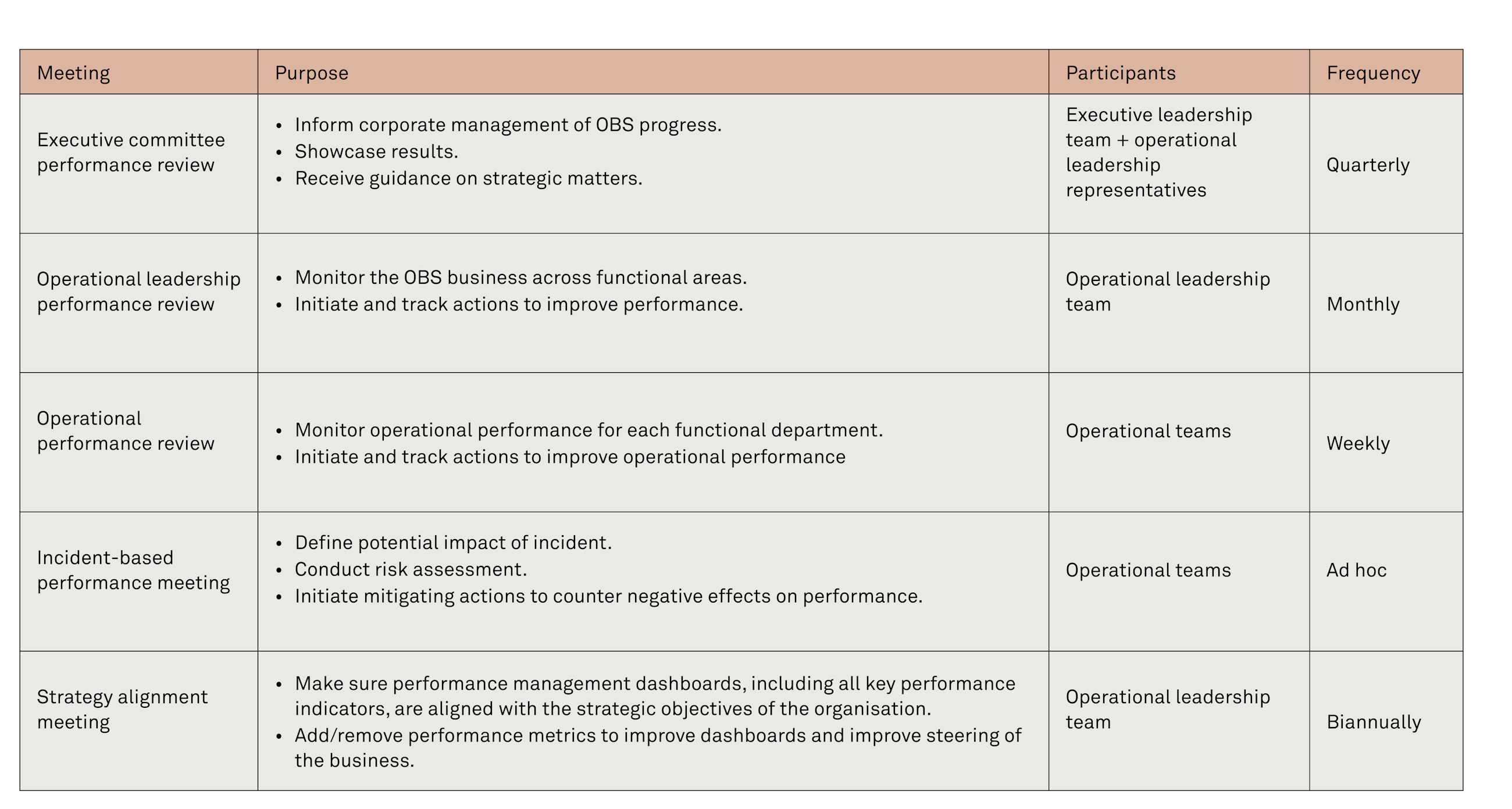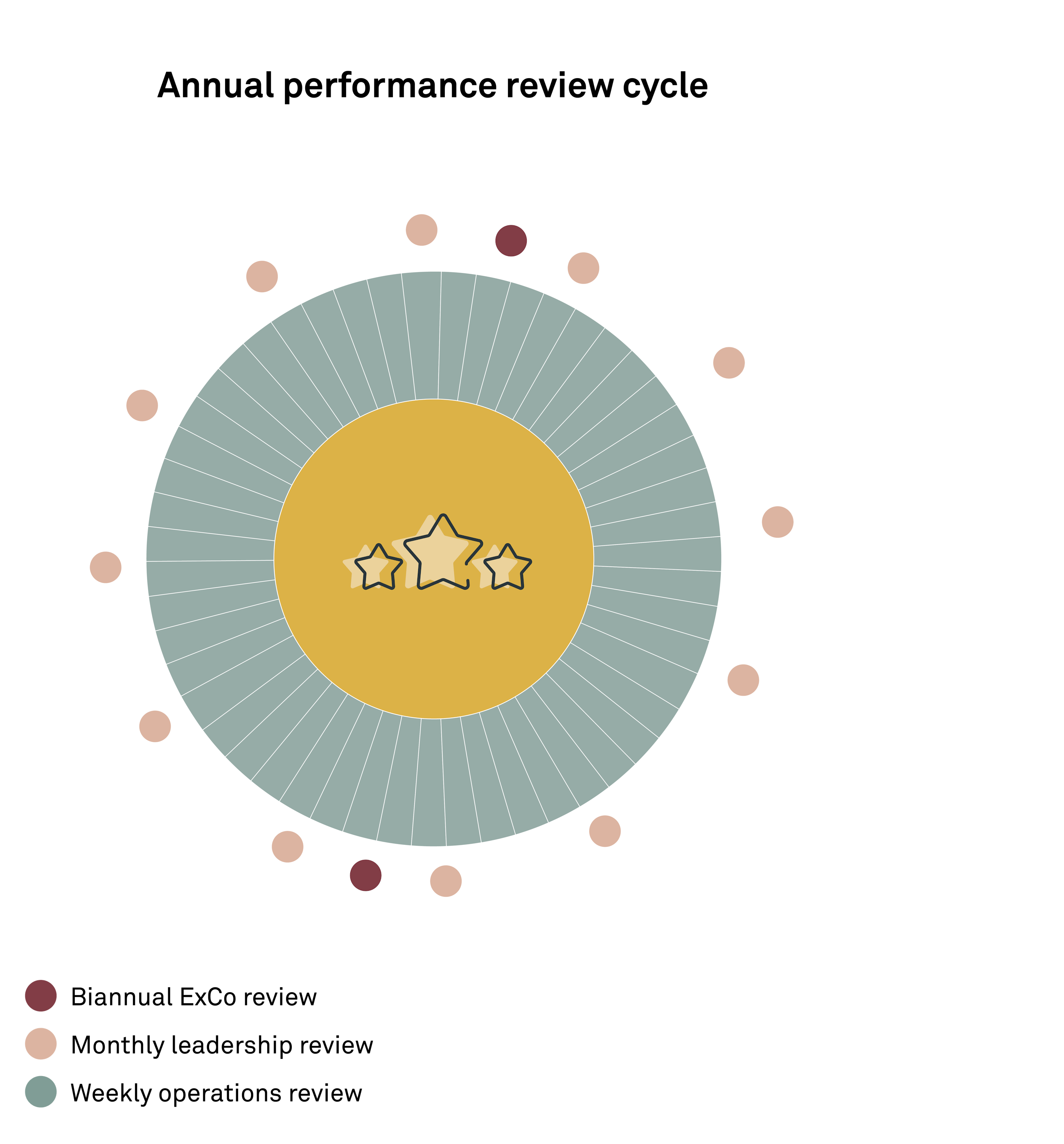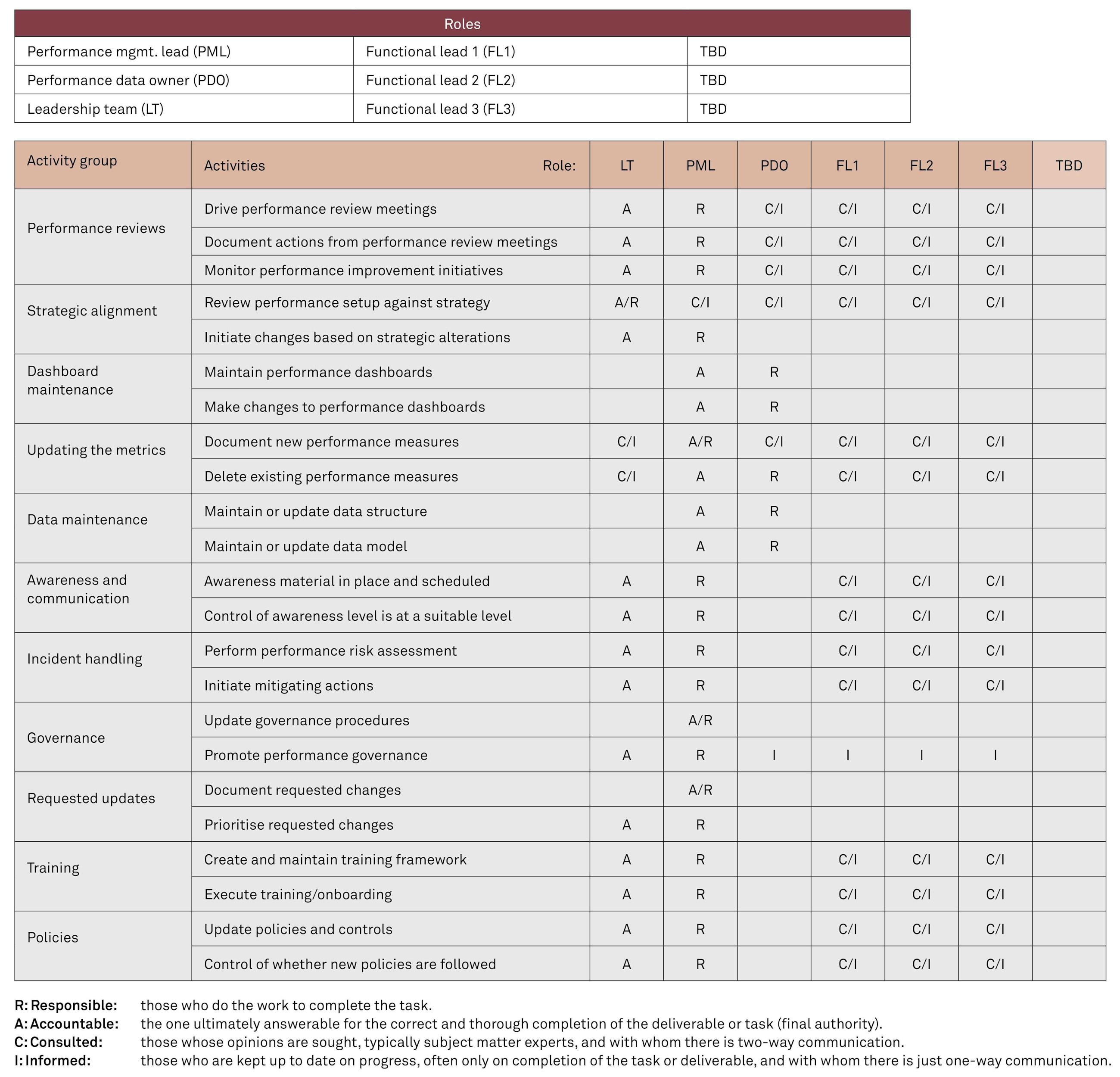How to instil proper governance surrounding your organisation's performance management setup
7 August 2020
Having a well-designed performance management framework allows you to link the organisation’s strategic objectives to its key performance indicators across all organisational levels. This requires you to deliberately design and frequently adjust the strategy as it evolves and as your business changes.
However, proper performance metrics do not prompt any impact on their own. You only achieve impact when someone acts on the information conveyed by the performance indicators, i.e. someone needs to do something different tomorrow than what they did today.
By establishing a governance structure surrounding the technical performance management capabilities (i.e. the process of manipulating data into informative performance indicators in visual dashboards), you allow your organisation to ensure that performance insights are used to prompt action and information sharing across organisational levels.
So, how do you define a governance structure for your performance management setup? We suggest that you follow the three-step process below, which gives you a simple way to outline the critical elements of a performance governance structure.
Step 1 - Define your meeting structure
Performance governance is about the way you work with performance management, and it should be an integrated part of daily operations across all levels of the organisation. To be precise, you should ideally make monitoring and improving performance an integral part of what everyone does regardless of role description and organisational function. However, we all know that such a scenario is a utopian abstraction, and so to avoid that performance management is neglected, it is important that you outline key performance review meetings throughout the year.
We know from experience that the following considerations are relevant when you define your annual performance meetings:
- You must distinguish between standard performance review vs incident-based performance reviews, i.e. your organisation needs to know how to monitor performance related to normal operations as well as how to act when unexpected incidents impact status quo.
- You must structure meetings to allow information to flow both top-down, e.g. strategic directions being cascaded down, and bottom-up, e.g. performance insights or risks being brought to the management’s attention.
Below is an example of what an organisation’s performance review meetings might look like:
When you define your organisation’s performance review meetings, it is important that you ask yourself:
- What is the ideal meeting structure for your organisation (when, what, who)?
- What is the optimal meeting frequency (number of meetings) and cadence (timing and pattern)?
- What is the right decision authority related to the various aspects of the performance review process?
- What is the best approach to track and monitor the tasks defined at your performance review meetings?
Step 2 – Define your annual performance review cycle
When you have defined the necessary performance review meetings, the second step is planning your annual performance review cycle in alignment with other business-critical activities. Most companies have annual cycles related to budgeting, target-setting, risk management and strategy configuration. These are all relevant activities with close ties to performance management, and ideally, you should use a proactive performance management setup relying on leading KPIs as a critical input for all the before-mentioned activities.
Consequently, it is important that you plan your organisation’s performance review cycle with these other annual activities in mind.
When you plan your annual performance review cycle, it is important that you ask yourself:
- What is the causality between the output from the performance review meetings and the decisions to be made at other important meetings throughout the year?
- What are the relevant performance metrics to be discussed at each meeting (executive management should not consider the same KPIs as operational management, however, the KPIs should be linked)?
Step 3 – Define your performance governance activities
When you have defined your organisation’s performance review meetings and planned the annual cycle, the third step entails that you define critical performance governance activities and assign clear roles for each. These governance activities are all the tasks that need to be performed in order to ensure that the performance management system operates optimally. High-level performance governance activities include, but are not limited to, maintaining and updating the data model, updating and adjusting visual performance dashboards, tracking performance improvement initiatives and executing performance review meetings.
When you define your organisation's performance governance activities, we know from experience that a responsibility assignment matrix or RACI matrix can be a helpful instrument. A RACI matrix describes the participation by various roles in completing tasks or deliverables for a project or business process. The four roles include:
R = Responsible: those who do the work to complete the task.
A = Accountable: those ultimately answerable for the correct and thorough completion of the deliverable or task (final authority).
C = Consulted: those whose opinions are sought, typically subject matter experts, and with whom there is two-way communication.
I = Informed: those who are kept up to date on progress, often only on completion of the task or deliverable, and with whom there is just one-way communication.
Below is an example of what a RACI matrix might look like related to performance governance activities.
Final remarks
Following the three steps outlined above, you can enable your organisation to start working in a more structured manner when it comes to performance management while also establishing greater clarity about roles and responsibilities.







